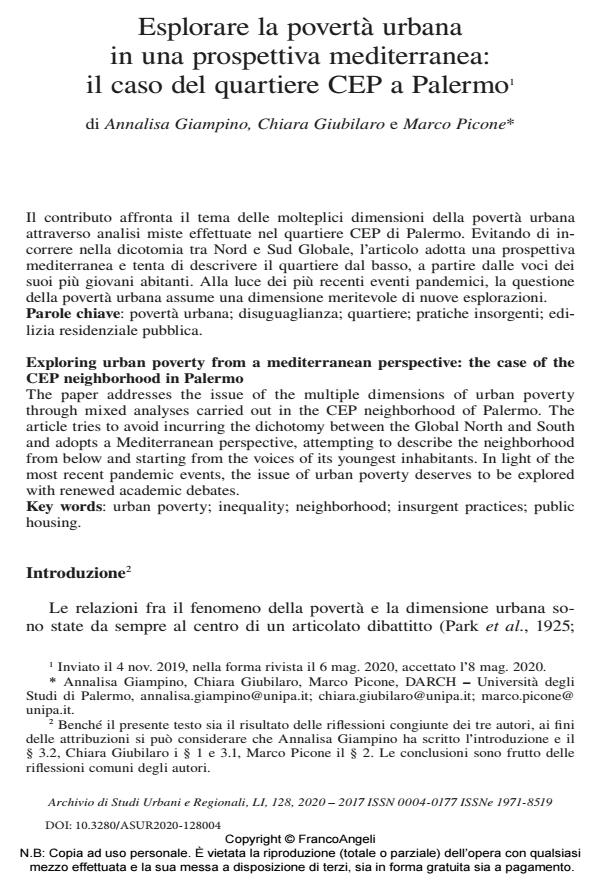Exploring urban poverty from a mediterranean perspective: the case of the CEP neighborhood in Palermo
Journal title ARCHIVIO DI STUDI URBANI E REGIONALI
Author/s Annalisa Giampino, Chiara Giubilaro, Marco Picone
Publishing Year 2020 Issue 2020/128
Language Italian Pages 26 P. 38-63 File size 259 KB
DOI 10.3280/ASUR2020-128004
DOI is like a bar code for intellectual property: to have more infomation
click here
Below, you can see the article first page
If you want to buy this article in PDF format, you can do it, following the instructions to buy download credits

FrancoAngeli is member of Publishers International Linking Association, Inc (PILA), a not-for-profit association which run the CrossRef service enabling links to and from online scholarly content.
The paper addresses the issue of the multiple dimensions of urban poverty through mixed analyses carried out in the CEP neighborhood of Palermo. The article tries to avoid incurring the dichotomy between the Global North and South and adopts a Mediterranean perspective, attempting to describe the neighborhood from below and starting from the voices of its youngest inhabitants. In light of the most recent pandemic events, the issue of urban poverty deserves to be explored with renewed academic debates.
Keywords: Urban poverty; inequality; neighborhood; insurgent practices; public housing.
- Le sfide della formazione urbanistica nell'era post-pandemia Filippo Schilleci, in TERRITORIO 98/2022 pp.71
DOI: 10.3280/TR2021-098012 - Il diritto ad aspirare nelle geografie dei bambini. Una ricerca-azione partecipativa nel quartiere CEP di Palermo FrancoAngeli Journals, in RIVISTA GEOGRAFICA ITALIANA 4/2021 pp.23
DOI: 10.3280/rgioa4-2021oa12957
Annalisa Giampino, Chiara Giubilaro, Marco Picone, Esplorare la povertà urbana in una prospettiva mediterranea: il caso del quartiere CEP a Palermo in "ARCHIVIO DI STUDI URBANI E REGIONALI" 128/2020, pp 38-63, DOI: 10.3280/ASUR2020-128004